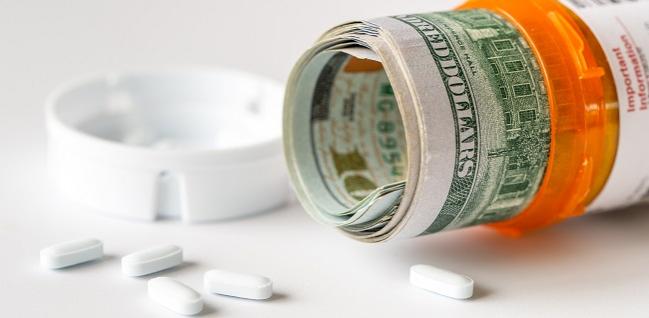Colchicine in the Crosshairs for Its High US Cost
Thanks to a regulatory quirk, CMS payments skyrocketed by nearly 30-fold between 2008 and 2017.

Taxpayer dollars spent on colchicine have spiked thanks to a regulatory quirk that enabled a company to exclusively market the centuries-old drug and allowed other manufacturers to follow suit. US Centers for Medicare & Medicaid Services (CMS) payments topped $340 million in 2017, nearly 30 times what claims had been a decade prior, a new analysis shows.
Natalie McCormick, PhD (Massachusetts General Hospital, Harvard Medical School, Boston), and colleagues share their findings in a research letter published online this week in JAMA Internal Medicine.
Colchicine, long used to treat gout and pericarditis, drew headlines last year thanks to COLCOT, which renewed hopes that addressing the inflammatory hypothesis for CVD might bear fruit post-MI. That trial’s positive results were soon followed by the those of LoDoCo2, focused on chronic coronary disease. More recently, colchicine’s anti-inflammatory effects have been explored in COVID-19.
But in the United States, the drug’s regulatory history has involved belated branding, unexpected price hikes, and limited generic availability—all of which translate into cost concerns.
B. Joseph Guglielmo, PharmD (University of California, San Francisco), describes the “ripple effect” of this history. Colchicine is so long-standing that the drug was originally grandfathered into use without formal US Food and Drug Administration approval. “Because colchicine and other pre-FDA generics had never been evaluated and approved by the FDA, they were, therefore, legally unapproved drugs,” he explains in an invited commentary.
On this backdrop, the company URL Pharma sponsored a small trial of low- versus high-dose colchicine in acute gout, subsequently getting the FDA’s formal sign-off in 2009. And thanks to the Hatch-Waxman Act, the manufacturer enjoyed a 3-year period of exclusivity for its drug, sold as Colcrys, increasing its price from mere pennies to $5 a tablet. Takeda acquired the company in 2012.
As it stands now, Colycrys is protected by patents that extend through 2029, the researchers explain. “Thus, although more than six independent generics have FDA approval to date, only authorized generics with price points set by brand-name companies are currently available to treat acute gout, pericarditis, and now potentially millions with myocardial infarction.”
McCormick told TCTMD that while colchicine isn’t the only drug to go through the FDA’s “Unapproved Drugs Initiative” pathway, it had an unusually steep price increase after approval. “It’s difficult for patients to afford the medication,” she said, adding, “Five dollars a pill for 30 days: they either can’t fill the prescription or they’ll fill it and stretch it out.”
For COVID-19, the drug’s price won’t likely be prohibitive in short-term regimens, said McCormick. In the rheumatology realm, cost is more of an issue for people taking colchicine not for acute gout flares but rather as long-term prophylaxis—a time frame that might be similar in the cardiovascular space.
‘Public-Spending Burden’
The investigators used CMS data to estimate average colchicine costs from 2008 through 2017. Adjusted for inflation and Medicare rebates, the price per pill rose from $0.24 in 2008 to $4.20 in 2011, peaking at $4.66 in 2015.
“Authorized generics entered the market in 2015, priced only marginally lower than the brand-name medications, but considerably higher than the previous, unapproved formulations,” they write, noting that the generic combination of probenecid-colchicine, rarely used, remained steady throughout at around $0.66 per pill.
Over the decade-long period, Medicaid spending on single-ingredient colchicine rose by 2833%, with 58% of this rise related to the increasing cost of the drug, and reached a total of $32.2 million in 2017. Had prices remained at levels seen prior to Colcrys’ approval, the total would have been $2.1 million.
The “public-spending burden,” the researchers conclude, is “potentially limiting millions of US patients from affording its benefits as a long-term therapy for gout or after myocardial infarction.”
Guglielmo, in his editorial, points out that demand for colchicine is likely to grow as new indications have begun to show promise.
Yet the initial investment in research and development—a study of just 184 patients, published in the journal Arthritis & Rheumatology—can’t rationalize the drug’s high selling price, he says. “The ideal investment would be a new molecular entity that provides an objective, meaningful improvement in public health. Colchicine does not fit this example. Only a fraction of an investment was required for Colcrys, a product that has provided no increased value and an unnecessary, long-term cost burden to the healthcare system.
“The current study findings illustrate that we can never allow such an egregious case to take place again,” Guglielmo concludes.
Caitlin E. Cox is News Editor of TCTMD and Associate Director, Editorial Content at the Cardiovascular Research Foundation. She produces the…
Read Full BioSources
McCormick N, Wallace ZS, Yokose C, et al. Prolonged increases in public-payer spending and prices after unapproved drug initiative approval of colchicine. JAMA Intern Med. 2020;Epub ahead of print.
Guglielmo BJ. The colchicine debacle revisited. JAMA Intern Med. 2020;Epub ahead of print.
Disclosures
- McCormick reports grants from the Canadian Institutes of Health Research during the conduct of the study.
- Guglielmo reports no relevant conflicts of interest.


Comments